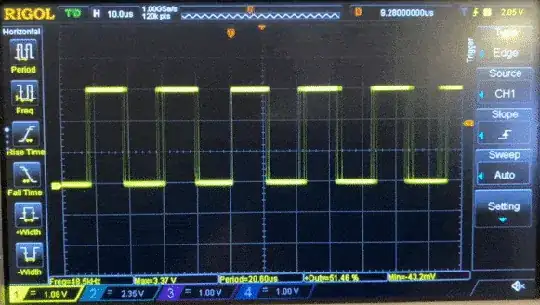I'm new to electronics but I have a Rigol DS1054Z oscilloscope and I'm experimenting to help learn. I've created an incredibly simple sketch using an ESP32 and Arduino IDE:
void setup() {
pinMode(32, OUTPUT);
}
void loop() {
delayMicroseconds(10);
digitalWrite(32, LOW);
delayMicroseconds(10);
digitalWrite(32, HIGH);
}
However, the square wave is incredibly "shaky" or unstable looking. Why is that?
